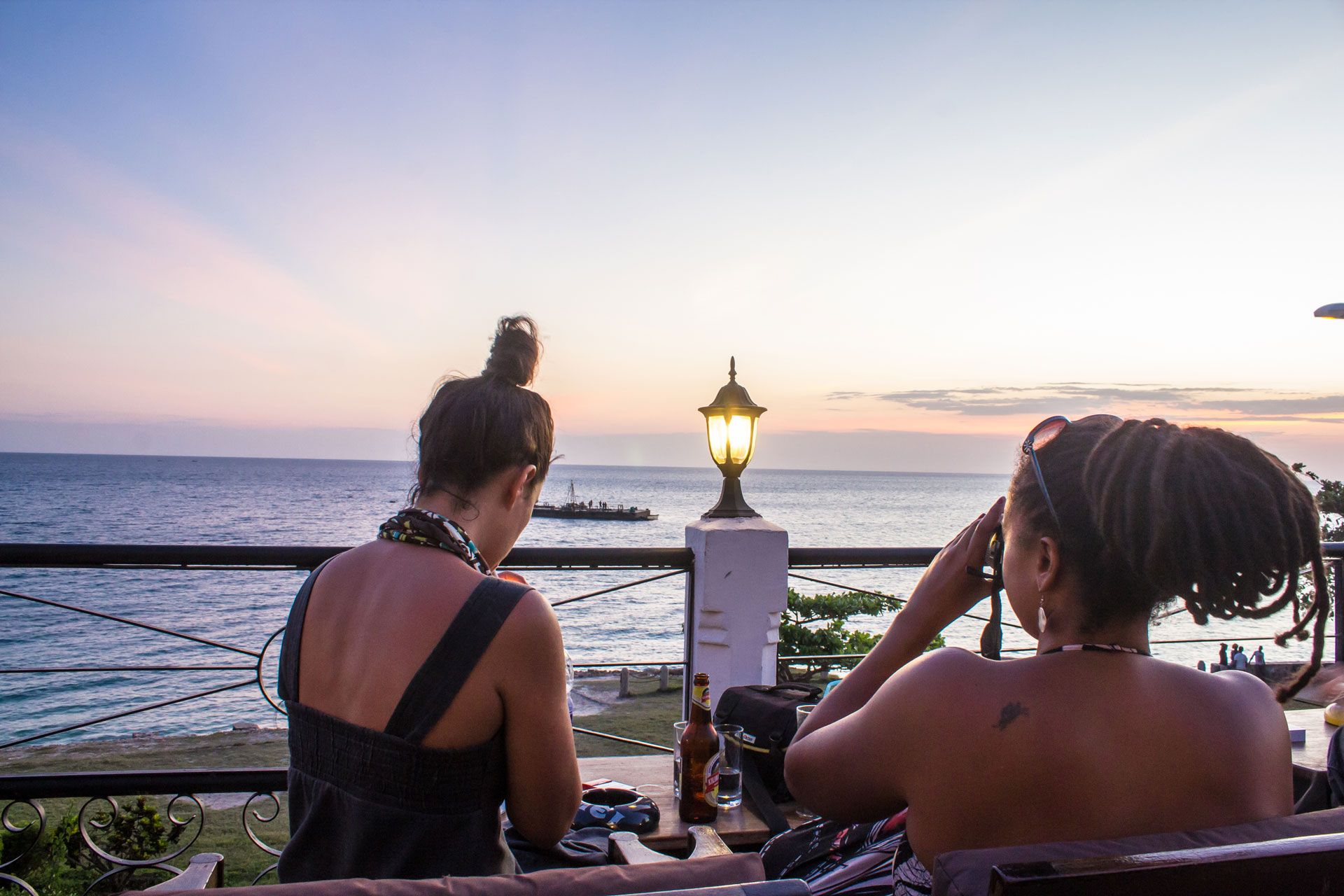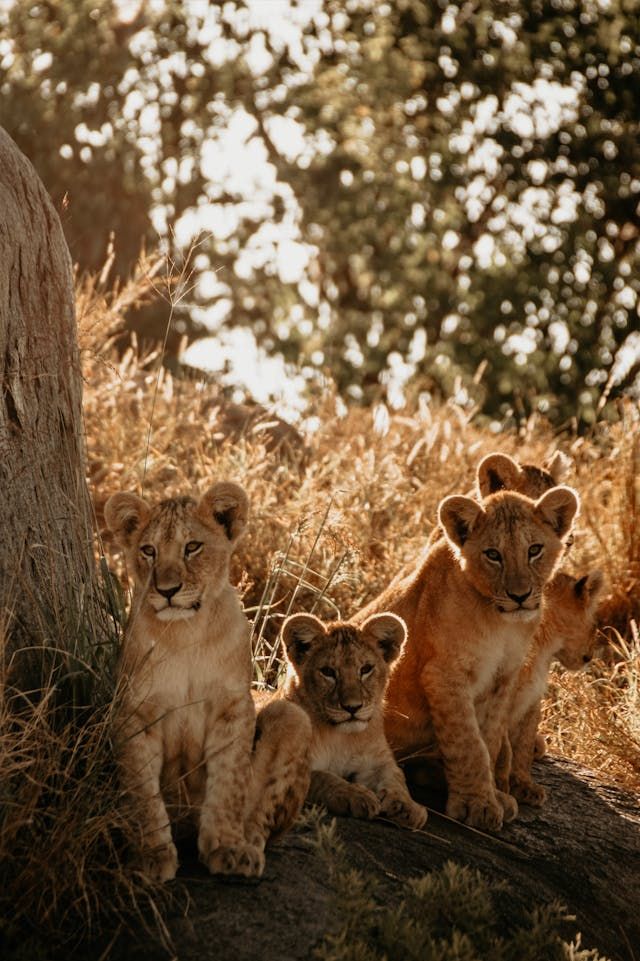
Zanzibar vs Tanzania Mainland Guide: Beaches or Safari Adventures
10 min readPlanning your Tanzanian adventure but torn between the spice-scented islands of Zanzibar and the vast wilderness of the mainland? You're facing one of East Africa's most delightful dilemmas. While many travelers assume they must choose between pristine Indian Ocean beaches and world-class safari experiences, understanding what each destination offers will help you craft the perfect journey that matches your travel dreams and budget.
Tanzania presents two dramatically different yet equally captivating experiences. Zanzibar beckons with its UNESCO World Heritage Stone Town, powder-soft beaches, and rich Swahili culture, while mainland Tanzania delivers some of Africa's most legendary safari destinations, including the Serengeti and Ngorongoro Crater. Whether you're drawn to cultural immersion, wildlife encounters, or simply unwinding on tropical shores, this comprehensive guide will help you make the right choice for your East African adventure.
Zanzibar vs Tanzania Mainland Guide
- Understanding Tanzania's Two Faces: Islands vs. Mainland
- The Zanzibar Archipelago Experience
- Mainland Tanzania's Safari Legacy
- Climate and Seasons: Timing Your Visit
- Understanding East Africa's Weather Patterns
- Cultural Immersion: Two Distinct Heritage Experiences
- Zanzibar's Swahili Crossroads
- Mainland Tanzania's Tribal Diversity
- Adventure Activities: From Underwater to High Altitude
- Zanzibar's Marine Adventures
- Mainland Tanzania's Diverse Adventures
- Accommodation Styles: From Beach Resorts to Safari Lodges
- Zanzibar's Accommodation Spectrum
- Mainland Safari Accommodations
- Budget Considerations: Understanding Cost Differences
- Zanzibar Budget Breakdown
- Mainland Safari Investment
- Making Your Choice: Key Decision Factors
- Consider Your Travel Priorities
- Combining Both Destinations
- Practical Planning: Logistics and Preparations
- Getting There and Around
- Health and Safety Considerations
- FAQ: Your Zanzibar vs. Mainland Questions Answered
Understanding Tanzania's Two Faces: Islands vs. Mainland



The Zanzibar Archipelago Experience
The Zanzibar Archipelago, located approximately 25 kilometers off Tanzania's coast, consists primarily of Unguja (commonly called Zanzibar) and Pemba islands. This tropical paradise offers a unique blend of African, Arab, and Indian influences that have shaped its culture for over a millennium.
What Makes Zanzibar Special:
- Stone Town's labyrinthine streets filled with Omani palaces, Persian baths, and bustling markets
- Pristine beaches with crystal-clear waters perfect for snorkeling and diving
- Rich spice heritage earning it the nickname "Spice Island"
- Vibrant Swahili culture expressed through music, art, and architecture
- Intimate island atmosphere ideal for romantic getaways and cultural exploration
The archipelago's compact size means you can experience diverse attractions within short distances. A typical day might begin exploring Stone Town's historical sites, continue with a spice tour in the afternoon, and conclude with sunset drinks on a beach that rivals any Caribbean destination.



Mainland Tanzania's Safari Legacy
Mainland Tanzania encompasses some of Africa's most celebrated wildlife destinations, covering over 945,000 square kilometers of diverse ecosystems. From the endless plains of the Serengeti to the volcanic crater of Ngorongoro, the mainland offers safari experiences that have captured imaginations for generations.
Mainland Highlights:
- The Great Migration, one of nature's most spectacular phenomena
- Big Five wildlife viewing in world-renowned national parks
- Cultural encounters with Maasai communities maintaining traditional lifestyles
- Mount Kilimanjaro, Africa's highest peak and a bucket-list climbing destination
- Diverse landscapes from savanna grasslands to highland forests
The mainland's vast scale allows for extended safari circuits, combining multiple parks and reserves to maximize wildlife viewing opportunities. Popular northern circuit routes typically include Tarangire, Lake Manyara, Serengeti, and Ngorongoro Conservation Area.
Climate and Seasons: Timing Your Visit
Understanding East Africa's Weather Patterns
Both destinations experience tropical climates with distinct wet and dry seasons, though Zanzibar's island location moderates temperature extremes compared to mainland areas.
Dry Season (June-October): This period generally offers the most comfortable weather conditions for both destinations. Zanzibar experiences gentle trade winds that keep humidity manageable, while mainland areas see clear skies perfect for game drives. [Verify specific temperature ranges and rainfall data]
Short Rains (November-December): Brief afternoon showers typically don't disrupt travel plans significantly, and this period offers excellent value with fewer crowds. Wildlife viewing remains good on the mainland, while Zanzibar's beaches stay inviting.
Long Rains (March-May): This season brings heavier rainfall that can affect road conditions on the mainland and limit some beach activities in Zanzibar. However, the landscape becomes lush and green, offering unique photographic opportunities.
Dry Season Peak (January-February): Often considered ideal for mainland safaris due to excellent weather and the southern Serengeti calving season. Zanzibar enjoys its driest months with perfect beach conditions.
Cultural Immersion: Two Distinct Heritage Experiences
Zanzibar's Swahili Crossroads
Zanzibar's strategic position as an Indian Ocean trading hub created a unique cultural fusion that visitors can experience today. The archipelago's heritage reflects centuries of interaction between African, Arab, Persian, and Indian communities.
Cultural Experiences in Zanzibar: Stone Town walking tours reveal architectural gems like the House of Wonders and Sultan's Palace, while the narrow streets buzz with daily life largely unchanged for decades. Local guides typically share stories of the spice trade, slave history, and cultural traditions that shaped modern Zanzibar.
Spice tours often include visits to working farms where families have cultivated cardamom, cinnamon, and cloves for generations. These experiences frequently include traditional cooking demonstrations and opportunities to purchase authentic spices directly from producers.
The dhow sailing tradition continues along Zanzibar's coastline, with sunset cruises offering glimpses into maritime heritage while providing stunning photographic opportunities.
Mainland Tanzania's Tribal Diversity
Mainland Tanzania hosts over 120 ethnic groups, each maintaining distinct traditions and customs. Safari circuits often include cultural visits that provide insights into traditional ways of life, particularly among the Maasai people of northern Tanzania.
Cultural Opportunities on the Mainland: Maasai village visits typically include demonstrations of traditional building techniques, beadwork, and pastoral practices. Many communities welcome visitors for authentic cultural exchanges rather than purely touristic performances. [Always verify current cultural tourism guidelines]
Coffee tours in highland regions like the Usambara Mountains combine agricultural learning with cultural insights, as local families explain traditional farming methods passed down through generations.
Local markets in towns like Arusha or Moshi offer opportunities to interact with diverse communities while sampling regional specialties and purchasing authentic crafts.
Adventure Activities: From Underwater to High Altitude
Zanzibar's Marine Adventures
The Indian Ocean surrounding Zanzibar creates a natural playground for water enthusiasts. The coral reefs support diverse marine ecosystems perfect for snorkeling and diving, while consistent trade winds make the archipelago ideal for water sports.
Popular Water Activities: Snorkeling and diving sites around Mnemba Island typically offer encounters with tropical fish, sea turtles, and dolphin pods. The coral gardens provide excellent opportunities for underwater photography, though visitors should always choose operators committed to reef conservation.
Kitesurfing and windsurfing conditions are generally excellent along the southeast coast, particularly during the dry season months. Several schools offer instruction for beginners while providing equipment for experienced enthusiasts.
Traditional dhow sailing excursions combine cultural learning with relaxation, as these iconic vessels have plied Zanzibar's waters for centuries.
Mainland Tanzania's Diverse Adventures
Beyond traditional game drives, mainland Tanzania offers adventure activities ranging from mountain climbing to cultural trekking. The diverse topography creates opportunities for visitors seeking active experiences alongside wildlife viewing.
Adventure Options: Mount Kilimanjaro climbing attracts adventurers worldwide, with various route options accommodating different fitness levels and timeframes.
Walking safaris in parks like Tarangire provide intimate wildlife encounters while offering physical challenges beyond traditional vehicle-based game drives. These experiences typically include armed guides and focus on tracking skills and ecosystem understanding.
Cultural trekking in highland areas like the Usambara or Pare Mountains combines hiking with village visits, offering insights into traditional agricultural practices and mountain communities.
Hot air balloon safaris over the Serengeti create unforgettable perspectives of the Great Migration while providing unique photographic opportunities.
Accommodation Styles: From Beach Resorts to Safari Lodges
Zanzibar's Accommodation Spectrum
Zanzibar's accommodation options range from budget guesthouses in Stone Town to luxury beach resorts along pristine coastlines. The variety ensures options for different budgets while maintaining the island's cultural authenticity.
Accommodation Categories: Stone Town heritage hotels often occupy restored historical buildings, offering cultural immersion alongside modern comfort. These properties typically feature traditional architecture with contemporary amenities.
Beach resorts along the east and north coasts range from intimate boutique properties to larger resort complexes. Many emphasize sustainable practices while providing direct beach access and water sports facilities.
Budget travelers can find comfortable guesthouses and backpacker accommodations throughout the archipelago, particularly in Stone Town and smaller fishing villages.
Mainland Safari Accommodations
Safari accommodations on the mainland range from basic campsites to ultra-luxury tented camps, each offering different levels of comfort and wildlife proximity. The variety allows travelers to balance budget considerations with desired comfort levels.
Safari Accommodation Types: Luxury tented camps often provide exceptional service while maintaining minimal environmental impact. These properties typically offer prime wildlife viewing locations with expert guides and gourmet dining.
Mid-range safari lodges balance comfort with value, usually featuring comfortable rooms, quality meals, and professional guiding services. Many emphasize community partnerships and conservation efforts.
Budget camping safaris and basic lodges make wildlife experiences accessible to cost-conscious travelers while still providing essential services and safety standards.
Budget Considerations: Understanding Cost Differences
Zanzibar Budget Breakdown
Zanzibar generally requires moderate budgets for comfortable experiences, with costs varying significantly between Stone Town and beach areas. Independent travelers can manage expenses through careful planning, while luxury seekers will find world-class options.
Typical Budget Ranges: Budget travelers might expect daily costs including accommodation, meals, and activities to range widely depending on season and choices.
Mid-range budgets typically cover comfortable accommodation, regular dining, and several activities while allowing flexibility for spontaneous experiences.
Luxury travel in Zanzibar can include private villa accommodation, exclusive dining, and personalized activities with premium service levels.
Mainland Safari Investment
Safari costs on the mainland vary dramatically based on accommodation choices, group size, and park combinations. Understanding these factors helps in planning realistic budgets for desired experiences.
Safari Cost Factors: Park fees represent significant portions of safari budgets, particularly for premium parks like Serengeti and Ngorongoro.
Transportation costs depend on group size and vehicle type, with private safaris commanding premium prices compared to group options.
Accommodation choices significantly impact total costs, with luxury camps charging substantially more than basic lodges or camping options.
Guide services and additional activities like balloon safaris or cultural visits add to base safari costs but often provide exceptional value through enhanced experiences.
Making Your Choice: Key Decision Factors
Consider Your Travel Priorities
Your ideal destination depends on personal preferences, travel style, and specific interests. Understanding these factors helps narrow choices between Zanzibar's cultural beaches and mainland Tanzania's safari wilderness.
Choose Zanzibar If:
- You prioritize cultural immersion and historical exploration
- Beach relaxation and water activities appeal more than wildlife viewing
- You prefer compact destinations where multiple experiences are easily accessible
- Romantic ambiance and intimate settings matter for your trip
- You have limited time but want diverse experiences
Choose Mainland Tanzania If:
- Wildlife photography and Big Five encounters top your priority list
- You dream of witnessing the Great Migration or other natural phenomena
- Adventure activities like mountain climbing appeal to you
- You have adequate time for multiple-day safari circuits
- Cultural interactions with traditional communities interest you
Combining Both Destinations
Many travelers successfully combine Zanzibar and mainland experiences, creating comprehensive Tanzanian adventures that satisfy diverse interests. This approach requires careful planning but delivers incredibly rich travel experiences.
Combination Strategies: The classic "safari and beach" combination typically begins with mainland wildlife viewing followed by Zanzibar relaxation. This sequence allows for active adventures followed by restorative beach time.
Cultural enthusiasts might spend time exploring Stone Town's history before experiencing Maasai traditions on the mainland, creating comparative cultural perspectives.
Adventure seekers could tackle Kilimanjaro before unwinding on Zanzibar's beaches, balancing physical challenges with relaxation.
Flight connections between Arusha (mainland safari hub) and Zanzibar operate regularly, making combinations logistically feasible.
Practical Planning: Logistics and Preparations
Getting There and Around
Both destinations require different transportation approaches, though Tanzania's tourism infrastructure makes both accessible for international travelers.
Zanzibar Access: International flights serve Zanzibar's Abeid Amani Karume International Airport from various regional and international destinations. Alternatively, travelers can fly into Dar es Salaam and take short connecting flights or ferry services to the archipelago.
Mainland Access: Kilimanjaro International Airport serves northern safari circuits, while Julius Nyerere International Airport in Dar es Salaam provides broader international connectivity. Ground transportation from airports to safari destinations typically requires 1-3 hours depending on specific locations.
Local Transportation: Zanzibar's compact size makes dala-dala (local buses), taxis, and rental scooters practical for independent exploration. Many accommodations provide transfers and activity transportation.
Mainland safaris require 4WD vehicles due to park road conditions and wildlife safety requirements. Most visitors use organized safari services rather than attempting independent driving.
Health and Safety Considerations
Both destinations require similar health preparations, though specific risks may vary between coastal and inland areas.
Health Preparations: Malaria prevention measures are recommended for both destinations, though risk levels may vary seasonally and geographically.
Yellow fever vaccination requirements depend on arrival country and recent travel history. Consult current health authorities for specific requirements.
Water safety practices remain important throughout Tanzania, with bottled or properly treated water recommended for drinking.
Safety Guidelines: Both destinations maintain generally good safety records for tourists following standard precautions. Stone Town requires normal urban awareness, while safari areas have specific wildlife safety protocols.
Ocean activities in Zanzibar should always involve reputable operators with proper safety equipment and local knowledge of conditions.
FAQ: Your Zanzibar vs. Mainland Questions Answered
Whether you choose Zanzibar's spice-scented breezes and turquoise waters or mainland Tanzania's endless savannas and wildlife encounters, your Tanzanian adventure promises memories that last lifetimes. For those torn between destinations, consider that the greatest luxury might be experiencing both - after all, Tanzania's diversity deserves comprehensive exploration.
Ready to plan your perfect Tanzanian adventure? Discover exclusive safari and beach packages on Tsavaro and let our local expertise craft your ideal East African journey.